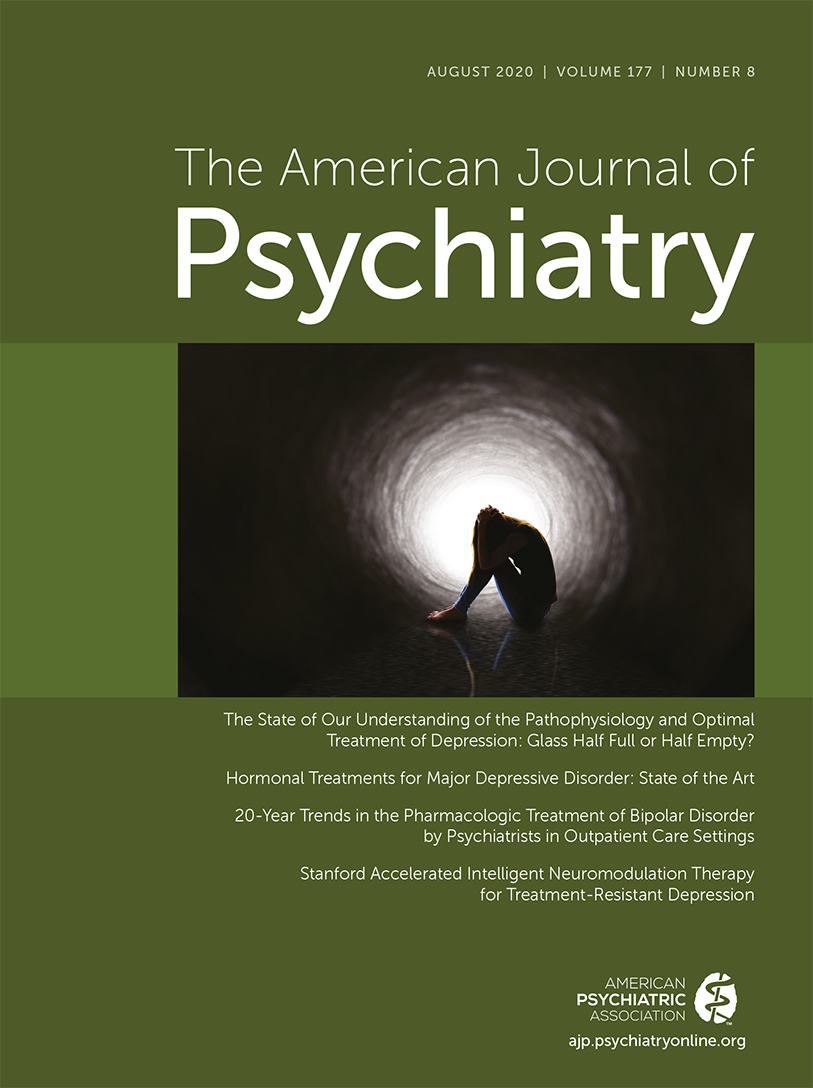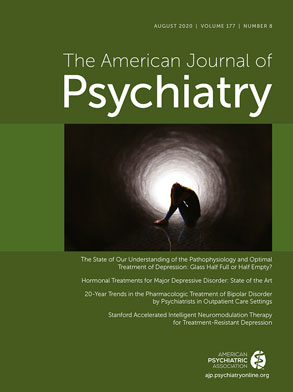In this issue, Bränström and Pachankis (
1) provide novel data from a total population sample on mental health treatment utilization in transgender persons relative to the general population. Transgender (or trans) persons—that is, persons who identify with a gender different from the one assigned to them at birth—frequently suffer from mental health disorders, mostly mood and anxiety disorders (
2), and high suicide attempt rates have been documented (
3). However, to date, precise numbers have been difficult to establish because of small sample sizes, lack of comparison groups, low prevalence rates, and divergent prevalence rates between countries (
4,
5).
In Sweden, the general population registry is connected with the country’s national patient registry, which allows researchers to link the gender status and legal gender of a citizen with their mental health treatment utilization and previous hospitalization resulting from suicide attempt. Bränström and Pachankis exploited this unique opportunity to assess the mental health treatment utilization of 2,679 trans persons relative to the total Swedish population (9,747,324 people). In a second, post hoc and unplanned analysis, they also compared the trans people to a matched sample from this general population (
6). Their exciting data on the Swedish trans population clearly show, first, that while trans people are about six times more likely than the general population to suffer from mood and anxiety disorders, these rates are markedly reduced with time since the last gender-affirming surgery. Hospitalization rate for suicide attempts were also drastically reduced. Second, trans people nonetheless receive 3.4–3.9 times more prescriptions for antidepressants and anxiolytics than the general population, and even 10 years after gender-affirming surgeries, rates of mood and anxiety disorders remain elevated (21.1% for trans compared with 12.5% for cis people). Additionally, on a sociodemographic level, the study findings illustrate that, at least in Sweden, the trans population is younger on average than the general population, trans people are more likely to have a current female legal gender than a male legal gender, and trans people have a lower household income on average than the general population despite being more likely to have had a university education.
These findings significantly move the field forward, and they begin to address calls for population-wide data on mental health treatment utilization and prescription medication use among trans people (
2). Previous syntheses have been suboptimal and have been restricted to reviews and meta-analyses on small and disparate findings from different countries and cultures that naturally included different definitions of transgender persons, or were recruited from various pools (Internet-based surveys, convenience samples, or psychological and psychiatric interviews at intake for gender-affirming services). Because of the uniform way in which the present data were gathered and analyzed, these factors are excluded in this study.
However, although the data are promising (with regard to reductions in mental health problems with time) but also concerning (with regard to stagnating rates of mood and anxiety disorders after a decade), they simultaneously underscore present gaps. Controlled longitudinal (follow-up) studies on mental health in trans people remain scarce and are predominantly of a prospective nature (e.g.,
5,
7). Moreover, as noted above, previous comparative work has documented divergent rates of mental health problems across (European) countries (e.g., the ENIGI initiative [
4,
8]), thus limiting generalizability. Highlighting a crucial gap, part of this discrepancy may stem from differences in recruited subgroups of people. Bränström and Pachankis tried to address this issue post hoc (
6) by comparing persons with gender incongruence who have received gender-affirming surgery and persons with gender incongruence who have not received gender-affirming surgery. However, this comparison has some issues with interpretation because it lumps individuals wishing to have affirming surgery with trans people who do not wish such a surgery. This post hoc analysis revealed that there was no statistically significant difference in the prevalence of treatment for mood disorders between the two groups. Moreover, treatment for anxiety disorders was higher in persons diagnosed with gender incongruence and who had received gender-affirming surgery relative to persons diagnosed with gender incongruence and who had not received gender-affirming surgery.
Indeed, important for future analysis will be the examination of certain characteristics within the trans population who experience the highest need. For example, trans people are not uniform with regard to the age and time point in their life when they want to transition (
9). Some trans men and women request transition as early as possible (i.e., in their early 20s), while some trans women may feel pressured to, or would want to, father children and transition later (i.e., in their 40s and 50s). In addition, as noted above, while some persons with gender incongruence may wish to have gender-affirming surgery, others may only seek gender-affirming hormonal treatment or no treatment at all. It may seem likely that these cohorts will show differential rates of resilience and mental health needs. Similarly, sexual orientation differs greatly among trans people, and while many (older) studies have mostly focused on people identifying with the gender opposite to the one assigned at birth (e.g., the studies reviewed in reference
5), newer work (
10) has begun to include gender nonbinary (or genderqueer) persons as well. Gender nonbinary or genderqueer persons are individuals who may identify as both male and female, or neither, or may identify as different genders at different times (
10) and thus could be described as not identifying with the binary concept of maleness and femaleness. Moreover, sexual orientation may shift during transition in some but not all people. Therefore, prudence is required when interpreting the findings by Bränström and Pachankis and not, for example, collapsing all transgender persons into one unified group.
Likewise, a word of caution is required for the clinician. While the data expose a crucial mental health need of trans people with regard to mood and anxiety disorders as well as suicidal ideation, these needs may not be the only ones. On the one hand, while the data supporting reductions in suicide-related hospitalization with time since gender-affirming surgeries are promising, Bränström and Pachankis acknowledge that future work will need to examine the effects of these surgeries on the likelihood of completed suicide. On the other hand, a recent review of general health in trans persons has identified insufficiencies in the mental health spectrum being queried, that is, assessing mental health problems and disorders beyond mood and anxiety disorders, which is almost completely lacking for this population (
2). While research on the presence of autism spectrum symptoms in trans people has gained momentum and fostered healthy debate (
11,
12), research reporting on substance use or trauma and dissociative disorders is scarce but essential.
Trans people are regularly subjected to ostracism and societal rejection but also are frequent victims of violence (
13), which has a detrimental impact on their health. Substance use disorders may represent maladaptive coping mechanisms, and trauma- and stress-related disorders may result from the stress of being associated with being a minority and exposure to violence. Each of these issues may require different emphases on health outcomes and clinical interventions.
Another gap of the present study became apparent as Bränström and Pachankis were not able to determine, given the nature and availability of their data, the precise reason for the mental health care treatment and the precise nature of the treatment (e.g., psychiatric outpatient health care visit, collecting a prescription, or receiving psychotherapy, if any). From a biological perspective, corresponding data on brain structural (e.g.,
14) or neurofunctional associations of mental health (
15) are currently almost nonexistent in this population. This leaves a gap in linking the mental health needs of trans people to underlying neurobiological markers, mechanisms, and networks.
In summary, the exciting findings by Bränström and Pachankis provide novel data on the on mental health needs in trans persons, specifically mood and anxiety disorders and suicidal ideation. At the same time, they also highlight various avenues of future inquiry to determine more precisely which trans persons may have the highest need for mental health care.

